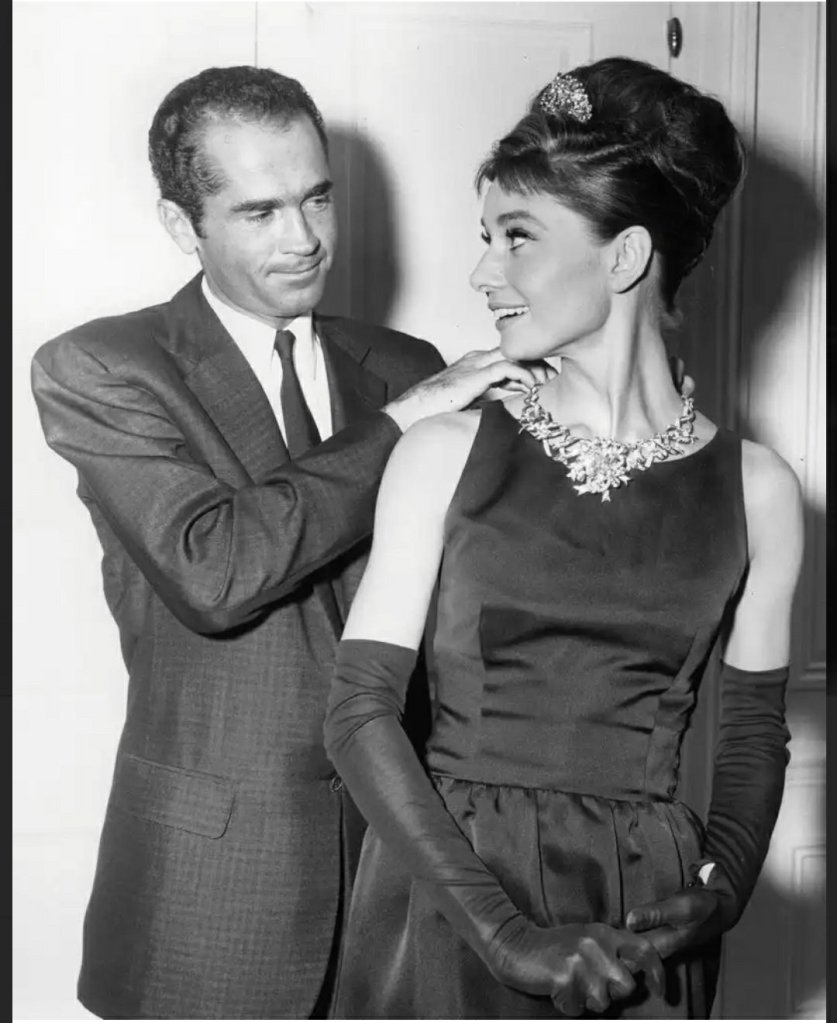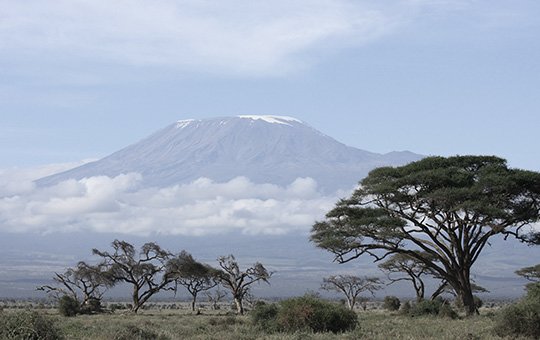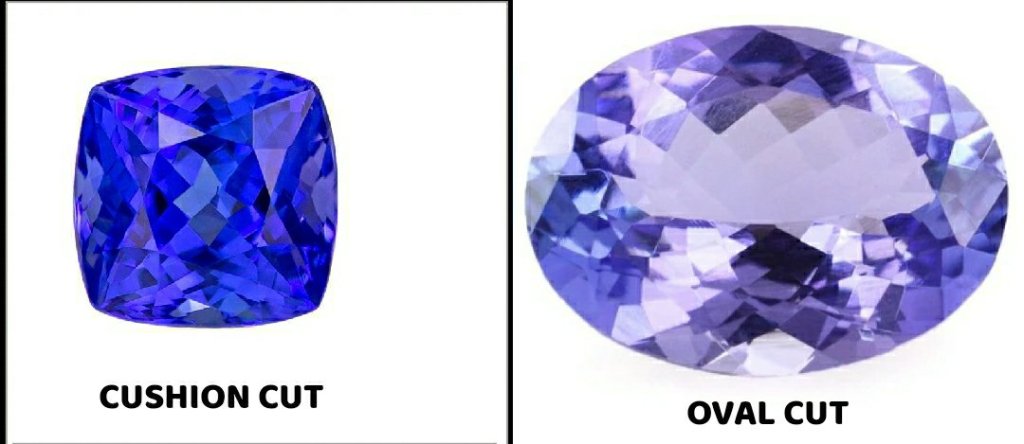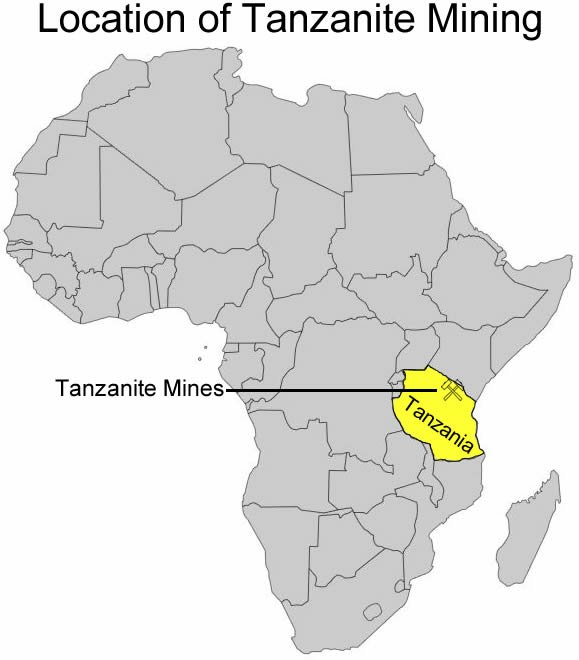– The Story of Tanzanite.
(The rarest gemstone on Earth)
• PROLOGUE – AN INCREDIBLE BUT FORTUNATE ACCIDENT.
The year was 1967.
Exactly a century before, in 1867, diamond had been discovered in the gravels near the Orange River in Kimberley, South Africa. The significant discovery heralded the beginning of the diamond industry that brought the entire African continent to the forefront of the gemstone industry.
Tanzania, a small country to the north of South Africa, was still light years away from such limelight but everything changed on one morning of July, 1967.
Imagine being the person discovering a gemstone rarer than diamonds. What a story would that make!

Masai herdsmen were tending their cattle in the hills of Tanzania, not long after a lightning strike set the surrounding grasslands on fire. The fire had burnt the grasslands and brown stones and rocks littered the landscape, which was quite normal. But Ali Juuyawatu, one of the herdsman, noticed a blue glow to some of the rocks. He took the rocks to a local amateur gemmologist, Manuel D’ Souza, who thought he had a trove of sapphires in his hands.

After he completed his identification procedures, it was discovered that the stones were, in fact, rare zoisite crystals. Unknowingly to him and entirely by chance, Juuyawatu had struck something that was far rarer than diamond. He had discovered tanzanite in the hills of northern Tanzania near the majestic Mount Kilimanjaro. It was to bring Tanzania to the forefront of Gemmology.

• OVERNIGHT CELEBRITY STATUS – TIFFANY & CO.
When De Souza first saw the crystal, he thought at first to be a sapphire. But in reality, it was completely different. It was, however, an American jewellery company, Tiffany & Co. that was responsible for bringing Tanzanite before the world. There is a story which says that when Henry Platt, the President of Tiffany & Co. first saw the gemstone, he declared it to be, “…the most beautiful gemstone to be discovered in 2000 years”.

He, however, had a problem with the name, Blue Zoisite, as he felt that it sounded more like “Suicide.” And thus, felt would have no appeal to the ladies! So he re-christened it as Tanzanite, after the country in which it had been discovered and ordered his company to promote this gorgeous new gemstone.
One year after the discovery of this exquisite gemstone, Tiffany & Co. launched the Blue-purple Hue gemstone in the US market, which instantly became a sensation among people. The Tanzanite was the most sought after stone in the US, surpassing even diamond in its popularity, almost overnight.

• THE GIFT OF THE KILIMANJARO – ORIGIN OF TANZANITE.
About 600 million years ago, tectonic movements in the African region, created fractures and folds. Areas of low density were formed at the base due to this folding movements. From the depths of the Kilimanjaro, rose a fluid that was rich in Hydrocarbons and contained Vanadium. Substances in the fluid were concentrated and localized in these elbows. Calcium, Aluminium, Silicon, Oxygen, Hydrogen and Vanadium had organized together and formed brown crystals of Tanzanite. At a high temperature of 600˚C, this Vanadium was transformed. It was this very transformation that gave Tanzanite its brilliant blue colour.
• DEEP INTO THE HEART OF THE STONE – AN OVERVIEW.
Tanzanite is known as a blue gemstone but it is so much more than that. Its colours vary from light almost sky blue all the way up to a deep midnight blue. Add to this blue some flashes of red and touches of violet and purple and you can see why this gemstone really catches the eye. What makes it stand apart from every other gem, other than it’s brilliance, is that it is found and mined commercially only in one area in the entire world: the Merelani Hills of Tanzania, which is where it gets its name.

One of the most incredible properties of Tanzanite’s appearance is its property of Pleochroism.
In simple words, tilt Tanzanite and you will see three distinct colours in three crystal directions! American Mineralogist described the gem’s pleochroic colours as `red-violet, deep blue, and yellow green.’ Some specimens of Tanzanite can be a distinct blue when viewed from one direction, and vary from violet to red when viewed from other directions.

• Physical Properties of Tanzanite
✓ Mineralogy – Tanzanite is a blue colour-variety gemstone of the mineral Zoisite.
✓ Colour – Blue to bluish purple to bluish violet. Strong Pleochroism .Tanzanite is seen in a wide range of colour saturations and tones that make it an alternative stone for aquamarine, blue topaz, and sapphire.
✓ Lustre – Vitreous
✓ Transparency – Transparent. Often of high clarity.
✓ Cleavage/Fracture – Perfect cleavage in one direction.
✓ Mohs’ Hardness – 6.5
✓ Chemical Composition – Ca2Al3(SiO4)3(OH)
✓ Crystal System – Orthorhombic
✓ Uses – Gemstone

• THE 4Cs OF TANZANITE – CUT, CLARITY, CARAT & COLOUR.
- CUT – Cut is an important factor that can increase weight unnecessarily whilst impacting negatively on the beauty and value of the piece. Every gemstone has their unique cut and Tanzanite is no different. The most preferred cuts are the Cushion and the Oval Cuts.
- CLARITY – Any gemstones with obvious flaws or even fractures would be devalued considerably. Eye-visible inclusions decrease the value of tanzanite, particularly in lighter coloured stones. So, it is important the stone is perfectly clear when looked at.
- CARAT – Tanzanite colour is less saturated in smaller sizes. Gems must be above five carats in size to have fine colour.
- COLOUR – Deep saturated violet blue or blue violet are the most valuable tanzanite colours. Paler hues are more commonly found and is less expensive.




“The jewel is concentrated brilliancy, the quintessence of light.”
– CHARLES BLANE.
• ONE IN A MILLION – IN WAYS MORE THAN ONE.
Tanzanite gemstones have only been mined for a few decades and are only sourced from just one small location in Tanzania, not too far from Mount Kilimanjaro in the Merelani Hills of the Lelatema Mountain range, a small strip of land barely 4km in length. They are exquisitely beautiful, nearly mined out and are 1000 times rarer than diamonds.

Based on an independent study conducted in 2012, it is estimated if Tanzanite is mined at the current rate of 2.7 Million carats per year, the Tanzanite stock will be exhausted within 30 years.
In 1967, when the first tanzanite had been faceted and prepared for the market, jewellers and the public knew nothing of the gem. They had never seen its blue colour or even heard its name. In just 50 years, the popularity of Tanzanite skyrocketed, surpassing even Diamond. There cannot be any doubt that Tanzanite will continue to fascinate mankind with its unusual, captivating aura. Its deep blue with the slightly purple tinge is one of the most extravagant colours known to man and personifies immaculate, yet unconventional elegance.

The rarest gem on Earth has an unparalleled beauty and is almost divine in its brilliance. No wonder, it is called The Gift of the Kilimanjaro.
Had been in love with Tanzanite since I saw Kate Winslet wear “The Heart of the Ocean” (the blue gem neck piece ) in the acclaimed movie Titanic. Tanzanite is every girls dream. Thanks for writing this article now I know the science behind it and also why is it so expensive. Brilliantly written very informative. I must appreciate the cut, calarity, carat and color ( lot of illustrations) of the article!
LikeLike
🙈🙈🙈🙈 thanks a lottttttt Uno!! Means everything to me! Really! Keep supporting! ❤️❤️ Titanic really brought Tanzanite to the mainstream media, that’s for sure. 🤗
LikeLike
In love with this information about tanzanite😍 nicely written Shourya 👍🤩
LikeLike
🙈🙈🙈 thanks a lottttttt, poo!!! Means everything to me! Really! Hamesha support karti tu I feel blessed really! ❤️❤️ Thanks a lottttttt, pori. 😇
LikeLike
Amazing work… Loved the intricate details.. Keep it up.. Hope to see more works in the future..
LikeLike
🙈🙈🙈 thanks a lottttttt!!! Means everything to me! Really! Keep supporting! ❤️❤️ The intricacies are a plus for this one that’s true! 🤗
LikeLike
Very well written and informative,good work keep going
LikeLike
🙈🙈🙈 thanks a lottttttt, brother!! Means everything to me! Really! Keep supporting! ❤️❤️
LikeLike
Well written man. Loved it.
LikeLike
🙈🙈🙈 thanks a lottttttt, arko!! Means everything to me coming from you! Really! Keep supporting! ❤️❤️
LikeLike
I haven’t heard of it much before, but astonished to be honest by the beautiful way you depicted this, rare gemstone and also rare and beautiful description of it👌👌
LikeLike
🙈🙈🙈 thanks a lottttttt, vio!!! Your support alwayss means everything to me! Really! Keep supporting! ❤️❤️ Thanks so so much, yaar! 😇
LikeLike
This article is as lustrous as the precious tanzanite! KIU!! Thanks for widening my sphere of knowledge!
LikeLike
🙈🙈🙈 thanks a lottttttt, udi!! Means everything to me! Really! Keep supporting! ❤️❤️ you’re the best!
LikeLike
The artical was amazing .
LikeLike
🙈🙈🙈 thanks a lottttttt!!! Means everything to me! Really! Keep supporting! ❤️❤️
LikeLike
I did not know about this gemstone, thanks to you. You have beautifully wrote about this gemstone. You covered almost every part of about this gemstone, Right from how it was discovered to its exhaustion. I am in love with your writing. Keep going brother. I wish all the best for future writings. I am eager to read next blogs.
LikeLike
🙈🙈🙈 thanks a lottttttt, shiv!!! Your support alwayss means everything to me, brother! Really! Keep supporting! ❤️❤️ No wonder, you’re the best! 🤗😇
LikeLike
Pleochroism is now my next favourite subject to read up on.
😄 Precisely written, beautifully presented – even if it is the first time I’ve read up about this subject, had absolutely no problem understanding anything. 😊 Kudos! 👍🏻 Best wishes!!
LikeLike
🙈🙈🙈 thanks a lottttttt, Anisha!!! Means everything to me! Really! Keep supporting! ❤️❤️ PLEOCHROISM is a rare phenomena, almost like out of this world. Shown by a number of stones. You should definitely have a look on this! 💎
LikeLike
Fascinating! I’m in the same boat as the guy who thought this was simply Sapphire. Today I learnt, thank you 😀
Also, it’d be nice if you could explain the “carat” in metric terms, I have no idea about this.
LikeLike
🙈🙈🙈 thanks a lottttttt, brother!!! Coming from you means everything to me! Really! Keep supporting! ❤️❤️
Actually, Carat is nothing but a measure of the weight of a stone. And 1 carat is approximately 200 milligrams. 🤗
LikeLike
An absolutely lovely read ! Love the info …
LikeLike
🙈🙈🙈 thanks a lottttttt, didi!!! Your support and feedback alwayss means everything to me! Really! Keep supporting! ❤️❤️
LikeLike
Beautifully written. Excellent!
LikeLike
Very ancient and informative piece indeed.. never knew if you would not have put this in forefront.. Great..
LikeLike
🙈🙈🙈 thanks a lottttttt, poozzzyyaaa!! Means everything to me! Really! Keep supporting! ❤️❤️
LikeLike
Amazing!! Very well written!!!❤️
LikeLike
🙈🙈🙈 thanks a lottttttt, Sakshi! Being a geologist yourself, a feedback from you means everything to me. ♥️ Thanks a lottttttt, yaar for alwayss supporting me. 😊 You’re the best! 😁
LikeLiked by 1 person
Whoa! Never ever heard of this beautiful gemstone ever. I have read a lot about masai tribe bt it was nowhere mentioned that they were behind such beautiful discovery. Just read in a comment about as it was also in titanic in the heart of the ocean necklace and never bothered to think about that mysterious blue coloured gem. Thanks bhaiya for this trivia and enlightenment. Appreciate ur work of featuring such fascinating things in ur articles. Peace ✌️
LikeLike
🙈🙈🙈 thanks a lottttttt Shubham!! Coming from you means everything to me! Really! Keep supporting! ❤️❤️ Tanzanite has a really rich history bhai! 😁 Glad my blog made you think and appreciate 🤗♥️ means so much!
LikeLike
Very informative … useful information.very well written.
LikeLike
🙈🙈🙈 thanks a lottttttt bhau!! Means everything to me! Really! Keep supporting! ❤️❤️
LikeLike
A perfect information on such a beautiful and unique stone. Well written, very informative, Keep going!
LikeLike
🙈🙈🙈 thanks a lottttttt isha!! Means everything to me! Really! Keep supporting! ❤️❤️
LikeLike
Very well written and explained with beautiful illustrations!!!
Well done Shourya!!
LikeLike
🙈🙈🙈 thanks a lottttttt pondd!! Means everything to me! Really! Keep supporting! ❤️❤️
LikeLike
You are making a mark with every writing of yours. Beautiful information of such a beautiful gem. Keep writing keep enlightening us. So so well written Banerjee.
LikeLike
🙈🙈🙈 thanks a lottttttt obhinondon!! Means everything to me! Really! Keep supporting! ❤️❤️ Ei je porli khuuuuub khushi holam 🤗😇
LikeLike
Great content! Pud!! Being a geologist, I can say that you have presented a concise set of information that is very well-polished. I am intrigued by your interest in geology, knowing that this is not exactly your forté. Thank you for this read and keep me posted for any up-and-content as well. Kudos to you!!!
LikeLiked by 1 person
You are THE best for good reason. 🙈 I absolutely and completely love you a lot brother! 😁 Thank you so so much bhai! Means the world to me. ♥️♥️
LikeLike
Although, I’m not a fan of geology or gemmology but I am intrigued by your knowledge!!! You’ve written and illustrated it so well, Shourya!!🌠🤗 Terrific Work! Keep it up, and keep us posted!!!🔥🗞️
LikeLike
🙈🙈 thank you so so much Chaitalee! ♥️♥️ Means everything to me yaar! 🤗 Keep supporting! 😇
LikeLike